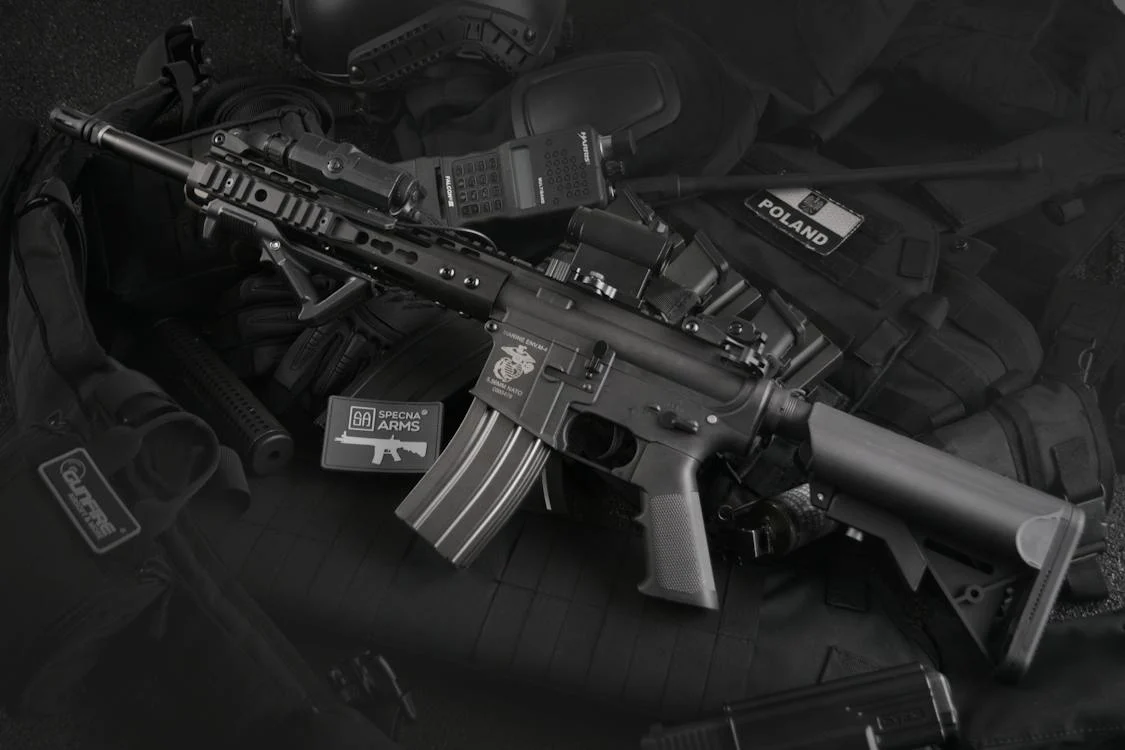There are many reasons to get an AR-15 semiautomatic rifle, which is considered ‘America’s rifle,’ though unofficially. People only came up with that name because of the rifle’s initials, but in reality, its complete name is ArmaLite rifle, and it was named after the company that designed it, ArmaLite.
If you’re planning to own an AR-15, you have to be familiar with its parts. This would be useful for when you decide to swap out some of its parts. Basically, an AR has two sections: the lower and upper receivers. The upper receiver consists of sub-units and more parts such as the barrel, handguard, charging handle, muzzle flash hiders, compensators, and brakes.
The lower receiver, on the other hand, is where you’ll find the serial number of the gun. According to the Bureau of Alcohol, Tobacco, Firearms, and Explosives (ATF), it’s the lower receiver that’s under the category of a firearm, so you can’t easily purchase it anywhere. You’ll need to have a federal firearms license (FFL) before you can buy a lower receiver, or you can opt for a private purchase.
If you’re wondering where you can make a private purchase, https://www.80percentarms.com/ar-15-80-lower-receivers/ is a good example of a website with a selection of AR-15 80% lower receivers in various colors and materials. This is only one of many suppliers online, so feel free to look for other options.
If it’s your first time buying a lower receiver, it’s better to be informed of your options as well as the factors you have to consider regarding the purchase. Having the right information will help you pick a lower receiver that suits your needs and preferences.
1. Dimensions And Features
There are lower receivers that are customized or built with special features. As such, they might come in unique shapes that might not be compatible with the jig you’re using. Make sure that your jig’s alignment uses tube housing so it’ll easily fit into uncommon lower receiver shapes. For more resources, Lunde Studio has comparisons, reviews, and a list of everything about guns. You should check them out.
2. Compatibility
Another consideration when purchasing a lower receiver is its compatibility. You need to choose a lower receiver that’ll be compatible with specific components of your AR. If you’re trying to build your own AR, that means you have to carefully select each part to put in it. You have to take note of each part’s compatibility with the rest of the rifle or else it’ll just be a waste of money.
Gun enthusiasts feel more satisfied when they’re the ones who build and assemble their firearms. It can be both fulfilling and challenging to look for the best parts to get the results you want. Whether you want to build an AR or any other type of rifle, it’s best to know the parts first before you buy them. You need to consider their sizes, materials, specifications, and you also have to determine how you plan to use your gun. For sporting and hunting, for example, rifle owners prefer adding scopes to their guns for higher accuracy.
3. The Material
Lower receivers can be of different types, depending on their materials and the manufacturing process they went through. The main ones are forged, billet, and polymer. Forged and billet lower receivers are both made from aluminum, but the former requires intense pressure to be molded while the latter is shaped out of a block. Polymer lower receivers are the cheapest ones because they’re made of plastic, which is lighter and easier to work with.
The decision on which material to choose for your lower receiver will depend on your preference and, of course, your budget. The polymer may be cheaper, but it may not be strong enough for your liking, and it’s also prone to breaking. Make sure to consider all the pros and cons of each type of lower receiver before you pick and purchase one for your rifle.
Conclusion
Purchasing a lower receiver isn’t easy, but it’s also not as complicated as it sounds. If you do your research well enough, you can make a sound decision based on the information you’ve gathered. If you have friends or family who know their way around guns or are highly familiar with them, you can ask them for tips and recommendations as well.
Different states also have different laws regarding guns and firearms, so make it a point to check those before you buy anything. Also, take note of the safety guidelines when owning and storing a gun. It’s always better to be on the safe side so you can make the most of your equipment.

